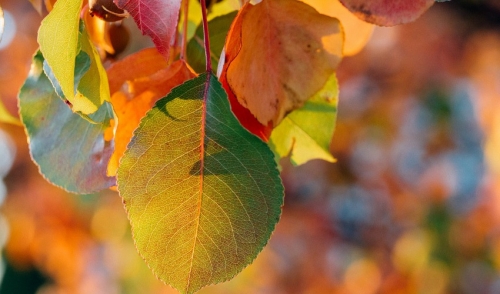
Turning Leaves into Soil Conditioner
What do you do with your leaves after you rake them? Do you bag them and put them on the curb? Do you burn them? What if I told you those leaves could be used to increase the healthiness of your soil? Turning leaves into soil conditioner is generally described as a leaf mold. Naturally recycling a pile of leaves and turning them into a soil builder creates a leaf mold. Leaf molds are essential because they improve the structure and water-holding capacity of soil. Leaf molds also create the perfect conditions for the community of organisms that dwell and enhance your soil. It can even be used as potting mix for flowers.
There really is no reason for any gardener not to use leaf mold. It is nothing more than decomposed leaves that are somewhere on the consistency scale between shredded leaves and humus. If you are curious of what it looks like, just go outside and push away a small area of dry leaves and underneath it you will find a layer of leaf mold. It would look like a layer of brittle brown material with a refreshing, earthy scent.
Creating a leaf mold is simple, but it is not like regular compost. It consists of a ‘cold’ composting process meaning that the decomposition process is done by fungi, rather than bacteria. This also means that the rate of decomposition is much slower. This rate is affected by four key factors. First is the kind of leaves you use in your pile. Some leaves like oak and holly are higher in cellulose than others, which mean they will take longer to break down. The second factor is combining leaves to create a good balance and to improve the rate and quality of your finished product. The third factor is moisture. Fungi need a moist environment and leaves must be attended to see that they do not remain dry for long periods of time. This could extend the process. Fourth, choose fresh fallen leaves because they have higher nitrogen content. Old leaves have already lost most of their nitrogen content, which is not ideal for quick decomposition. Using fresh leaves will speed up initial decomposition for the leaf mold. Leaves will also decompose faster if they are shredded before, but this is not mandatory.
The leaf pile needs to be fairly substantial in size in order to retain enough moisture and heat. About 25 trash bags full of leaves will create a pile that is about six feet square and five feet high. This would be the ideal size to begin your leaf mold. When the leaf mold is soft and crumbly after at least 12-months it is ready to distribute. You can distribute the mold around your perennials, vegetables, and shrubs. Leaf molds retain a lot of moisture so do not apply too close to your plants to avoid pest and disease problems. Additionally, you can add this mold to your potting mix or soil to improve any soil that is too sandy or too heavy. Do not hesitate to start early. Go out, grab a rake, and start making your own leaf mold today and improve the healthiness of your plants and gardens!


